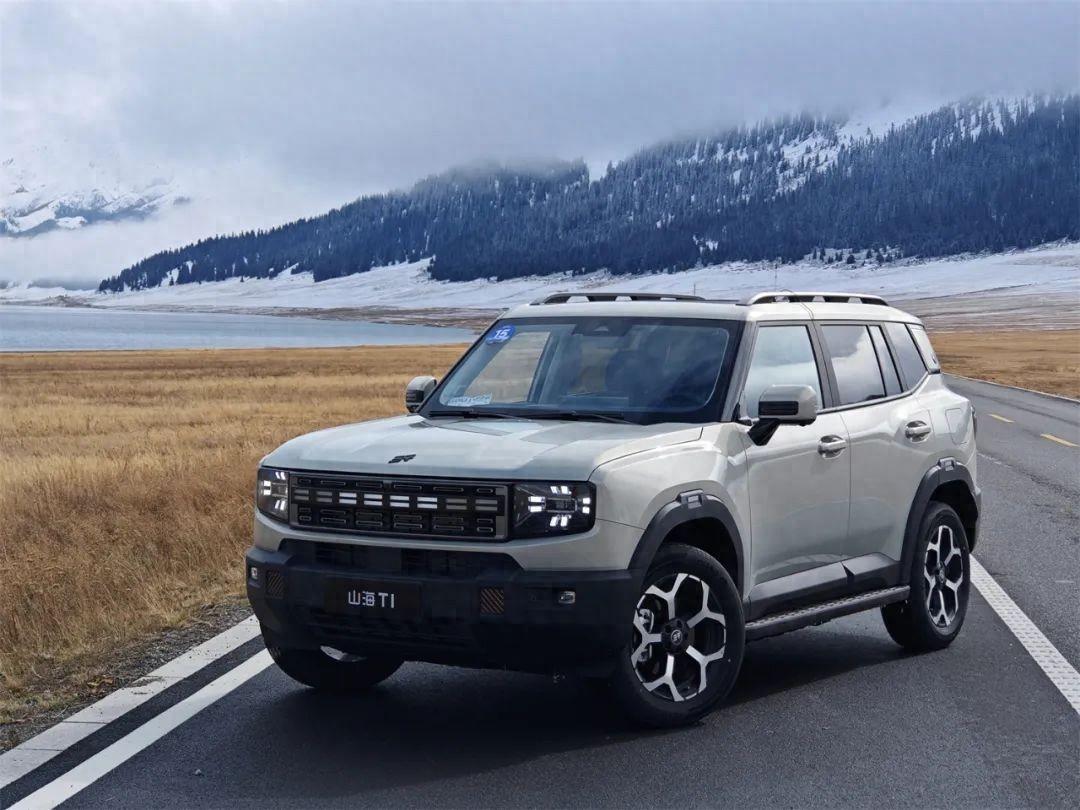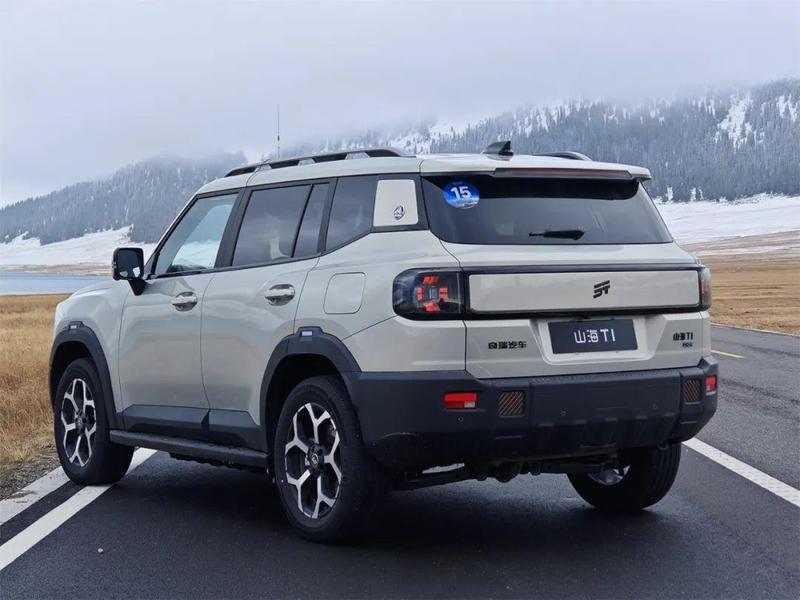

The boxy SUV design has gained significant popularity in the past two years, allowing many brands venturing into this field to reap its rewards. One of those brands is Jietu Automotive, which focuses on the “travel +” and “light off-road” concepts.
In September of this year, Jietu sold 15,523 units of the Jietu Traveler and 6,993 units of the Shanhai T2, which together accounted for nearly 40% of Jietu's total sales for the month. It can be said that the Jietu Traveler and the Shanhai T2 are the sales champions in their respective segments of "boxy SUVs" and "hybrid boxy SUVs."
Therefore, it is not surprising that Jietu is capitalizing on this success by launching the Shanhai T1, which shares the same platform as the Shanhai T2 but features a design and positioning that are more youthful, sporty, and affordable.

Compared to the Shanhai T2, the Shanhai T1 has a notably softer appearance. If the Shanhai T2 exudes a more rugged vibe, the Shanhai T1 leans more towards an urban look.
In terms of dimensions, the Shanhai T1 measures 4706mm in length, 1967mm in width, and 1845mm in height, with a wheelbase of 2810mm. Due to the absence of a rear "backpack" feature, the Shanhai T1 is about seven to eight centimeters shorter than the Shanhai T2, giving it a more compact appearance.

In terms of aesthetics, the most recognizable feature of the Shanhai T1 is its front fascia, which showcases clover-like headlights paired with a continuous horizon light strip in the center. The rear windows feature an upward-curving line that softens the boxy appearance. The rear light design also adopts a clover shape that echoes the front styling.

It's worth noting that while the Shanhai T1 is primarily aimed at light off-road driving, it boasts commendable off-road capabilities. With an approach angle of 28 degrees, departure angle of 29 degrees, a breakover angle of 19 degrees, ground clearance of 200mm, and a wading depth of 600mm, it’s well-equipped for tackling rough terrain. Additionally, the new model features a square tow hook on the rear bumper and has a towing capacity of 1.6 tons, catering to outdoor needs.
Inside, the Shanhai T1 generally maintains a consistent style with the T2, with the main difference being the addition of physical buttons below the 15.6-inch central touchscreen to control the air conditioning. Another change is the inclusion of a large handle on the passenger side, which also features a storage compartment, while the two handles previously found on the center console of the Shanhai T2 have been removed.

The 15.6-inch HD screen in the Shanhai T1 is powered by a Qualcomm Snapdragon 8155 chip and includes a range of interactive experiences such as navigation, multimedia entertainment, travel services, and lifestyle services. The Shanhai T1 retains several physical buttons, making it easier to operate without taking your eyes off the road, enhancing usability.

A significant highlight of the Shanhai T1 is its spacious interior, featuring up to 45 different storage compartments for added convenience, while a flat rear floor design ensures comfort for middle passengers. When the rear seats are folded down, they create a flat surface extending two meters in depth, transforming the interior into a spacious area.
In terms of power, although the platform is the same, the Shanhai T1 features a slightly different Kunpeng D-DM super hybrid powertrain compared to the Shanhai T2. The two-wheel drive model tested comes equipped with a 1.5TD hybrid-specific engine, paired with a front-wheel-drive motor and a single-speed hybrid transmission, simplifying the structure while delivering better energy efficiency compared to the three-speed DHT transmission found in the Shanhai T2. However, this means it lacks the low-speed gear for increased torque and high-speed gear for maximum speed that the DHT provides.

According to Jietu's official statements, the Shanhai T1 operates in electric-only mode at speeds below 70 km/h, which not only enhances fuel economy but also provides smoother performance in city driving. The engine offers a maximum output of 115 kW, with a thermal efficiency of 44.5%. The front motor features parameters of 150 kW and 310 Nm, providing sufficient power for this relatively compact SUV. For those seeking greater power, the all-wheel-drive version equipped with dual motors can achieve a combined output of up to 435 kW. In terms of range, the Shanhai T1 offers battery capacities of 26.7 kWh and 43.2 kWh, with CLTC electric-only ranges of 150 km and 220 km, respectively. Coupled with a large 70L fuel tank standard across the lineup, the total driving range can reach up to 1400 km.

Driving near Selim Lake at an altitude of just over 2,000 meters, the hybrid powertrain delivers a smooth acceleration without noticeable drops in power or lag. However, the chassis calibration leans towards a firmer setup, providing substantial support and direct road feedback, setting it apart from typical city SUVs. When encountering speed bumps, significant deceleration is necessary to minimize bouncing. Overall, apart from noticeable bouncing over larger potholes, the Shanhai T1 doesn’t exhibit excessive vibrations on city streets or well-paved roads, offering superior comfort compared to rugged off-road vehicles.
In summary, as a light off-road SUV that offers excellent aesthetics, spaciousness, and low energy consumption, combined with a more affordable price than the Shanhai T2, the Shanhai T1 has the potential to be another pillar of sales for Jietu Automotive.
